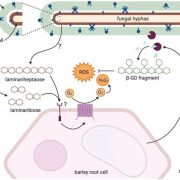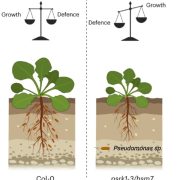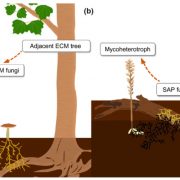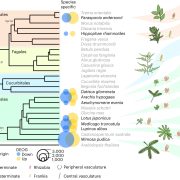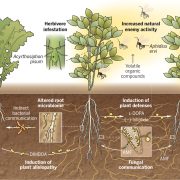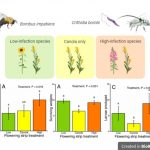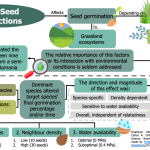An aphid RNA transcript migrates systemically within plants and is a virulence factor (PNAS)
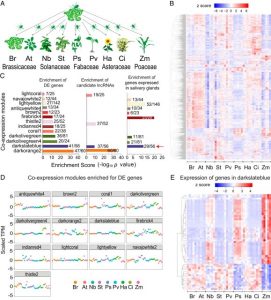 Aphids are an important insect pest that can cause significant yield loss to crops, particularly through feeding damage and as vector for devasting plant pathogens. How aphids and other sap-feeding insects use their stylet to penetrate the plant vascular tissues is well studied but the factors involved in establishing a long-term interaction between aphids and plant and how this occurs remain largely unknown. Chen et al. demonstrated that the green peach aphid M. persicae can colonize nine plant species from different families indicating that it is a true generalist. RNA-seq analysis using samples from nine host plants showed that M. persicae can coordinate its gene expression in response to the plant species it colonizes. Further analysis showed that differentially expressed genes are enriched for candidate long noncoding RNA (lncRNA) and some of the genes lie adjacent to each other on the aphid genome as tandem repeats. Analysis also revealed that some of these lncRNA belong to the same gene family and can translocate to distal leaves; the authors named them the Ya family (Ya means aphid in Chinese). Stable expression of M. persicae Ya1 RNA increases aphid reproduction whereas their fecundity decreases in RNAi lines, suggesting that YA1 is a virulence factor. This study showed that beyond serving as a vector for plant pathogens, M. persicae translocates it own RNA transcripts into the host plant as virulence factors. (Summary by Toluwase Olukayodo @toluxylic) Proc. Natl. Acad. Sci. USA 10.1073/pnas.1918410117
Aphids are an important insect pest that can cause significant yield loss to crops, particularly through feeding damage and as vector for devasting plant pathogens. How aphids and other sap-feeding insects use their stylet to penetrate the plant vascular tissues is well studied but the factors involved in establishing a long-term interaction between aphids and plant and how this occurs remain largely unknown. Chen et al. demonstrated that the green peach aphid M. persicae can colonize nine plant species from different families indicating that it is a true generalist. RNA-seq analysis using samples from nine host plants showed that M. persicae can coordinate its gene expression in response to the plant species it colonizes. Further analysis showed that differentially expressed genes are enriched for candidate long noncoding RNA (lncRNA) and some of the genes lie adjacent to each other on the aphid genome as tandem repeats. Analysis also revealed that some of these lncRNA belong to the same gene family and can translocate to distal leaves; the authors named them the Ya family (Ya means aphid in Chinese). Stable expression of M. persicae Ya1 RNA increases aphid reproduction whereas their fecundity decreases in RNAi lines, suggesting that YA1 is a virulence factor. This study showed that beyond serving as a vector for plant pathogens, M. persicae translocates it own RNA transcripts into the host plant as virulence factors. (Summary by Toluwase Olukayodo @toluxylic) Proc. Natl. Acad. Sci. USA 10.1073/pnas.1918410117


